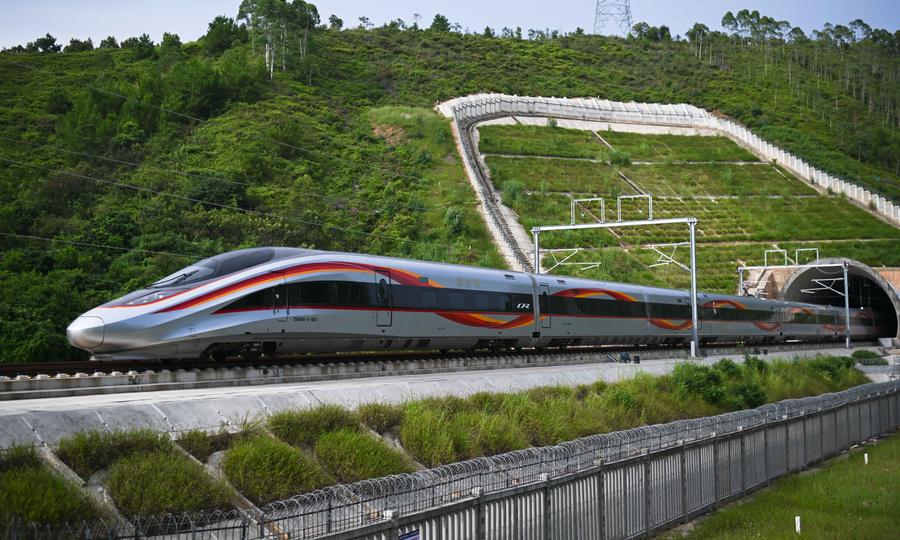Guidelines That Shape the Future

With China among the top three trading partners for over 150 countries and regions worldwide, the guidelines will help determine global prosperity and the wellbeing of the world’s people.
Much that is best about China is sadly lost in translation.
China’s system of five-year plans, which explains its transformation from a low-income country to an economic powerhouse accounting for approximately 30 percent of global growth, is a case in point. The plans are widely interpreted internationally as authoritarian diktats rigidly imposed, but this is to misunderstand the original Mandarin.
As long ago as 2006, the Mandarin was changed from 计划 (jihua) – plan – to 规划 (guihua) – planning – reflecting the transition from a planned to a socialist market economy. China’s five-year plans, therefore, are best understood as planning guidelines – 规 being a compass and 划 meaning to draw – that, while enshrined in law, are open to interpretation and development.
The guidelines mean that the entire nation can focus on achieving shared goals.
Seldom realized outside China, the plans result from extensive consultation spanning two to three years. The fourth plenary meeting of the 20th Central Committee of the Communist Party of China (CPC) held this October in Beijing was a key step in the development of the 15th Five-Year Plan to run from 2026 to 2030. The meeting reviewed and approved the Recommendations of the CPC Central Committee for Formulating the Plan. The Committee had drawn on specially commissioned research, multiple symposia, and ideas submitted by the eight consultative political parties, by research institutes and think tanks, and by over 3 million members of the public who responded on-line. The final plan is likely to be approved by the National People’s Congress (NPC) early in 2026.
Several U.S. thinktanks analyzing the approved Recommendations have already prejudged the 15th Five-Year, dismissing it “as more of the same” without recognizing that continuity is the great strength of the Chinese system. Whereas political parties elsewhere compete for power by denigrating the ideas of their opponents and, on assuming power, frequently dismantle the policies of their predecessors, parties in China collaborate under the leadership of the CPC. This enables policies to be pursued by “one generation after another,” as President Xi Jinping explained when introducing the Recommendations for the 15th Five-Year Plan.
Consequently, China is enabled to initiate and deliver long-term projects including, for example, constructing over 48,000 kilometers of high-speed rail that have facilitated sustained economic growth and brought together a very geographically dispersed population. The high-speed network was initiated under the10th Five-Year Plan, and the target is now to have 60,000 kilometers in place by 2030.

Much analysis of the likely content of the 15th Five-Year Plan has concentrated on the commitment to high-quality development, “to basically achieving socialist modernization” by 2035, and to China becoming an aerospace power or a “space-faring nation,” the term 航天强国 (hangtian qiangguo) being used for the first time. Some Western commentators have wrongly concluded that this means that “China’s people [will] increasingly find themselves left out in the cold,” perhaps confirming misplaced hopes that the “Chinese dream is slipping away,” as a New York Times headline asserts. Such is the perverse nature of geopolitics understood as a zero-sum game with only one possible winner.
The reality is profoundly different. The Recommendations emphasize that the “the fundamental purpose” of the “the focus on economic development” is to meet the “people’s growing needs for a better life.” This is facilitated by progress achieved under the 14th Five-Year Plan, including the eradication of rural extreme poverty with “people’s livelihoods…effectively guaranteed.” Given this as the platform upon which the 15th Five-Year Plan is to build, the clearly stated goal is “the all-round development of people and common prosperity for all people.”
Explaining the goal of “basically achieving socialist modernization” by 2035, President Xi Jinping has indicated that per capita GDP would need to “be on a par with that of a mid-level developed country.” This is generally accepted to mean doubling China’s GDP between 2020 and 2035, implying an annual growth rate of 4.7 percent. To achieve this, the Recommendations emphasize high-quality development thereby avoiding the middle-income trap that has prevented other successful developing countries from joining the club of high-income economies.
The new drivers of growth are to be underpinned by scientific and applied innovation. The intention is to transition away from labor-intensive industries towards high value ones, based on mid- and high-end technologies exploiting digitization and artificial intelligence. Not to be reliant on chance, proactive measures are proposed to promote developments in quantum technology, biomanufacturing, hydrogen and nuclear fusion energy, brain-computer interfaces, embodied intelligence, and sixth-generation mobile communications.
A key stimulus is the desire to build a greener economy, one that can capitalize on China’s global lead in green technology and support the ideals of ecological civilization and a beautiful China. Hence, improved incentive mechanisms are suggested to foster green consumption and low-carbon lifestyles.
Aware, though, of the potentially high economic and social costs of transition, the intention is also to upgrade key traditional industries including mining, metallurgy, chemicals, textiles, machinery, shipbuilding and construction. There is recognition, too, that agricultural and rural modernization are lagging other sectors.
Hence, the intention is to lift agricultural production and productivity through exploiting science to improve technologies and education to enhance management skills. The goal is to build a modern ecologically sustainable agriculture industry.

The judicious reliance on state support for industry evident in the Recommendations is highly consistent with new structural economic theory. Investment in research and development is provided to enterprises on the global technological frontier. Those not yet at the frontier are aided by removing infrastructure constraints, by specialist finance, and by human capital investment. Firms that have lost their comparative advantage are helped to shift to high value-added production or product branding or, even, to new industrial sectors. This congruence with modern theory is less surprising than it seems since “new structural economics” derives in part from observing how China has achieved the success that it has.
While the focus is on how China can advance modernization, the Recommendations are not mute on the geopolitical forces that seek to curtail China’s advancement. They refer to “intertwined chaos and intensified turmoil” noting that “unilateralism and protectionism are on the rise, and the threats of hegemonism and power politics are increasing.”
The Recommendations similarly do not shy away from the domestic economic challenges that China needs to confront. These include unbalanced and inadequate development, insufficient effective demand, excess industrial capacity, anachronistic reliance on fossil fuels, low agricultural productivity and a rapidly aging population.
Like its predecessors, the 15th Five-Year Plan will not be limited to economic policies which are merely means of fostering social development and the goal of common prosperity first established in 1953. Although a goal, common prosperity also refers to the process of ensuring that the benefits of economic growth are shared fairly. The aspiration is to transform the current income distribution, which is shaped like a pyramid with many people located towards the base, into the form of an olive with few individuals at either the top or bottom. To achieve this, the Recommendations address primary, secondary and tertiary allocation of resources.
With respect to the first, they emphasize the need to generate high-quality and full employment by supporting enterprises in stabilizing and expanding employment, and by actively cultivating new occupations and new positions especially for key groups including college graduates, migrant workers, and retired military personnel. They recognize, too, a need to improve labor standards and strengthen workers’ rights, to promote the wage collective bargaining system, to ensure payment of workers’ wages, and to increase the proportion of national income received as wages.
Secondary distribution is to be enhanced through a national unified pension insurance scheme with enhanced benefits, an improved medical security system, and expanded coverage of unemployment and work-related injury insurance.
Tertiary distribution, person-to-person transfers, is recommended with the rich being encouraged to act in the interests of promoting common prosperity.
However, common prosperity is not solely about finance. It entails: “the equalization of basic public services,” “education that satisfies the people,” improved medical security, health and life expectancy, “expanded green areas,” “effective protection of historical and cultural cities,” “public involvement in social governance,” and much more. It is about the wellbeing of the people.
The success of China’s 15th Five-Year Plan is not simply of local importance. With China among the top three trading partners for over 150 countries and regions worldwide, the guidelines it contains will help determine global prosperity and the wellbeing of the world’s people.
 Facebook
Facebook
 Twitter
Twitter
 Linkedin
Linkedin
 Google +
Google +







